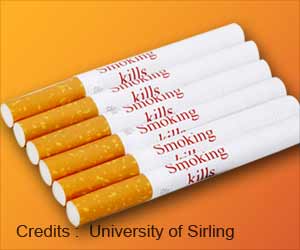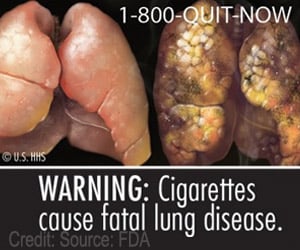New study has warned about the dangers of third-hand smoke, which is released from people who smoke and then delivered into non-smoking environments exposing people nearby to cigarettes' adverse effects.

‘Third-hand smoke has been described as the residual contamination from cigarette smoking that adheres to walls and other surfaces in places where smoking has previously occurred.
’
Read More..




The research suggests that even if someone is in a room where no one has smoked, that person could still be exposed to many of the hazardous chemical compounds that make up cigarette smoke, depending on who else had entered the room or previously visited it. Read More..
"In real-world conditions, we see concentrated emissions of hazardous gases coming from groups of people who were previously exposed to tobacco smoke as they enter a non-smoking location with strict regulations against indoor smoking," said Gentner, associate professor of chemical & environmental engineering.
"People are substantial carriers of third-hand smoke contaminants to other environments. So, the idea that someone is protected from the potential health effects of cigarette smoke because they're not directly exposed to second-hand smoke is not the case."
The researchers brought highly sensitive analytical instrumentation into a movie theater to track thousands of compounds, present as either gases or particles, over the course of a week. A diverse range of volatile organic compounds found in tobacco smoke spiked dramatically when certain audiences arrived for the movies. These increases were minor for G-rated movies, while audiences for R-rated movies -- which included moviegoers more likely to smoke or to be exposed to smoke -- consistently released much larger quantities of these compounds into the theater. The relative proportions of these emitted compounds confirmed that they were from slightly aged cigarette smoke.
"Despite regulations preventing people from smoking indoors, near entryways, and near air intakes, hazardous chemicals from cigarette smoke are still making their way indoors," said Roger Sheu, a Ph.D. student in Gentner's lab and lead author of the study.
Advertisement
The researchers also found a predominance of nitrogen-containing compounds from cigarettes, which would have migrated from people to other indoor surfaces.
Advertisement
The researchers said these results on the human transport of third-hand smoke now help to explain why previous studies had found notable quantities of nicotine on surfaces in numerous non-smoking environments.
The researchers emphasized that avoiding movie theaters is not the solution to avoiding third-hand smoke. In fact, the theater used for the study is modern, large, and well-ventilated, which reduced the effect of the emissions on concentrations of hazardous compounds in the room. In less well-ventilated spaces -- such as public transit, bars, offices, and homes -- similar third-hand smoke emissions would likely result in considerably higher concentrations of many of these compounds.
Source-Eurekalert











